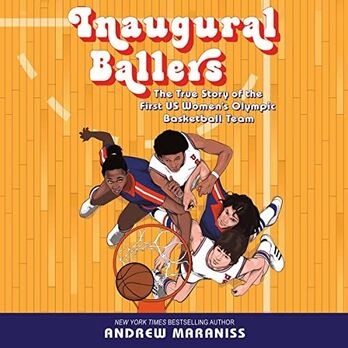 Last week I attended a fantastic high school basketball game that featured two of Wisconsin's top ranked teams,. With stunningly athletic NCAA Division 1 prospects, salivating college coaches, rowdy student sections, and an electric tension in the air, the game was an instant classic. Flashy ball skills, hard nosed defense, artful assists, knock down 3 point shooting peppered the see-saw battle that Wisconsin's major newspapaper, the Milwaukee Journal Sentinal was onhand covering. Who were the guys that were playing? Step back, fellas, this was a girls game! There's no denying how far women's baketball has come in the years since I was a high school zip in the late 1980's. Back then, the student section was reserved for the guys games, and if memory serves me corretly, many of the gyms would only pull out one side of bleachers for the girls games. Talk about disrespect! Thankfully, we now get to catch our local high school girls under bright lights and packed gyms! And they are living up to their hype every night. In fact, one can't watch female athletes now without marveling at their athleticism--and its not just basketball. Teens today have grown up in an era peppered with amazing female athletes like Brittney Griner, Mia Hamm, Danica Patrick, Serena Williams, and Allyson Felix dominating their respective sports. But it's easy to have a short memory, lack a retrospective eye, and forget how female athletes were treated not too long ago. Lack of equal opportunity, recognition, appreciation, and respect are just some of the ways women have been slighted or minimalized in their sports in the recent past. Today's young girls are not only talented athletes, but they listen carefully, watch attentively, and are keenly aware how society treats female athletes. Self reflective opinions are formed in elementary school gyms, and the attitudes these girls develop about sport and how they fit in this world in their youth may influence how they see they world as a teen and adult. Veteran author Andrew Maraniss, in his latest book Inaugural Ballers: The True Story of the First US Women's Basketball Team, explores an evolutionary period of history in women's sports. More specifically, Maraniss explores the impact that the 1976 US women's basketball team had on the trajectory of females in sports. Maraniss uses this event and the members of that 1976 squad to illustrate the fortitude of these women athletes, how they fought for the same respect as men, and just how profound an impact these players and their medal performance had on future generations of female athletes. With Inaugural Ballers, Maraniss is not just speaking passionately to young female athletes, but he's educating them in hopes they become influencial catalysts of change. There's a certain "passing of the torch" message that resonates in this book, and an inspiring plea to today's female athletes that they build on the progress and sacrifies that previous generations of athletes have made. It's no secret that I have long been a fan of Andrew Maraniss as YA author. You can look back in this blog for enthusiastic discussions of his previous books. Inaugural Ballers is no different, written in classic Maraniss style, bringing lively prose onto the court with essential facts and fascinating back stories. The book is full of great photos to compliment the text that give some visual orientation that younger readers crave. Maraniss is a meticulous reseracher and tells his story with colorful details that appeal to the mind and senses, which is his trademark skill in successfully connnecting with the young adult audience. Maraniss has long been a voice for those athletes fighting for respect and social justice. In his previous works, Maraniss has brought light to the likes of Perry Wallace, the first African American basketball player in the SEC, and Glenn Burke, the first openly gay MLB player. What makes Maraniss so relevant and remarkable as a YA nonfiction writer, is that much like his subjects, he is not afraid to take on shadowed topics and start tough conversations about issues that, quite honestly, young adults are increasingly trying to be hidden(some call it "protected") from. Maraniss is the gold standard when it comes to sports nonfiction for teens, and his expansive catalog of books faithfully accomplish the following objectives for teens: 1. Honor the history and the pioneers of the sport and the impact on development. 2.. Educate on where things stood in the past, where they currently stand, and what the future can look like in the sport. 4. Understand how certain athletes not only were trailblazers for their sport, but how they overcame obstacles, whether personal or societal, to advance the sport. 5. Introduce, fairly, colorfully, and accurately, people and events that impacted the development of the sport or person. 5. Provide motivational and thematic lessons generated from the content that young readers can unpack and take with them to use not only in their sport, but in their lives. Some highlights from my dog-eared pages of Inaugural Ballers--ones that I'm sure your patrons will appreciate- are this: Be the heroine of your life, not the victim These were the thoughts of Pat Head when she came back to school with a Silver World University Games medal in 1973. While she was stunned by the respect she received, it was clear the message for female athletes was that if you want respect and change, you must be proactive. This is such wise advice for today's girls. It may not be fair to have to fight harder than the guys for respect--but as the 1976 Olympic squad demonstrated, staying silent has no benefit either. Mom said sports aren't for girls- This is the sentiment that Nancy Lieberman's mom passed on to her when she displayed an affinity for playing sports. Even in 1976, female athletes were often referenced as "manlike" and those athletically skilled were viewed with a sexist skepticism. Lieberman found a safe haven and acceptance in sports, and her story represents the history of sexist discrimination against women athletes in the Olympics and the pressure the team felt in repreesenting a new generation of female athletes, constantly having to prove themselves as not only worthy athletes, but as females who were "normal" in the public eye. Female athletes bearing the burden of the sport on their shoulders Before a huge semifinal game that would ensure a medal, Coach Moore delivered a passionate speech that stressed the significance not only of the history they would be making, but the path that they would cut for future female athletes in envisioning themselves climbing that mountain toward recognition, respect, and equality in sports. While this may have been inspiring, it had to be truly intimidating for the girls to realize that every game could be a defining moment on the success, funding, and recognition for their sport. Not only did they bear the burden of gender bias, but their contingent success could possibly dictate the future path of the sport itself for females. "She searched her school library for books on women athletes and found none." This Lieberman library experience may be one of my most soul searching anecdotes from the book. As a librarian, not only do I put a lot of stock in the impact of sports books, but I feel that a good sports collection is one that represents a fair mix of sport, race, and gender. This story about Lieberman actually made me go back to my nonfiction sports collection and take a peek at my representation of women. Not only was I pleased that I had a strong female representation in my collection, but I was amazed by the breadth and quality of literature about female athletes circulating, spanning a breadth of sports from basketball, softball, running, tennis, golf, surfing, and so on. Clearly this is a bigger topic for another day, but this is the kind of soul searching as a librarian that one does after encountering a line like this. The week before Christmas. our girls basketball coach stopped by my library and asked for a book gift suggestion for his 7th grade daughter who is a basketball nut. Playing AAU ball since third grade, she lived through her dad's State Championship run 2 years ago and models her game after his future UCONN star recruit KK Arnold. A classic "gym rat", female style! I immediately gave him a copy of Inaugural Ballers to check out, and as he beamed after the holidays, it proved to be more than enlightening to his daughter! A girl like this is clearly in the wheelhouse of the audience Maraniss is intending to connect with, and one wouldn't have to look hard to find others girls like her to recommend this book to. I've said this before, and I'll say it again: We need Andrew Maraniss more than ever to keep writing books like this. In fact it's imperative, because if someone doesn't speak to the next generation of athletes like Inaugural Ballers spoke to the Germantown coach's daughter, these kids will never know the full story, and sadly, may never realize their full potetial.
2 Comments
 Andrew Maraniss is an author who believes past athletic history can be one of the best conduits for offering advice to future generations of kids on social issues. All of his books have a reputation for navigating the intersection of sports and social justice by highlighting game changing athletes who have cut against the grain of what society expected of them and stood up for their ideals. In his first book Strong Inside, Maraniss introduced readers to Perry Wallace, the first African American basketball player in the Southeast Conference. Then we had Games of Deception, highlighting the 1936 U.S. men's Olympic basketball team amid the backdrop of the Berlin Games which were played out during Hitler's Nazi Germany. In his latest book Singled Out, Maraniss presents the story of Glenn Burke, the first openly gay MLB player and his struggles to gain acceptance in the world of sports as well as life. Singled Out continues the line of titles by Maraniss written specifically for the Young Adult audience, but these titles resonate powerfully with adults as welll. Maraniss has earned a reputation as what I like to think of as "everyone's author". In terms of accessibility, sports books can be exclusive by often skewing towards age, or a specific audience of readers who have a vested interest and knowledge base in that specific sport. As a librarian, Maraniss has become my go-to for patrons age 10-100 looking for good sports nonfiction that cuts through any personality, age and background. And that's a rare find! He has a knack for speaking to every level, letting each story speak for itself, and allowing the reader to be affected by whatever aspect of the story they specifially connect with. His stories are universal, and as exciting, sincere, enertaining, electric, and inspirational, as they are educational. Since this is a YA book, I want to take time here to point out some things in Singled Out that stood out to me as great discussion points for the YA reader. I have even included an "Extra Innings" question for the YA reader to kick off a discussion (and no, we're not starting on the second question!) The search for identity is a struggle. One thing that constantly comes to mind in Glenn Burke's life is his search for identity. Maraniss does a great job highlighting Burke's struggle to not only find his identity as a person, but grapple with what to do with it both inside and outside of sports. The transition to adulthood for teens requires navigating unique layers, struggling to ultimately answer, "Who am I?" and "How do I fit in?" Glenn's struggle with his sexuality, his race, the outspoken nature of his personality, and how he tried to make all this fit into the context of unique environments is both enlightening and cautionary in the search for identity. It always seems, especially in the world of sports, that there is a strong stereotypical vision for what a "real athlete" should be. For many like Glenn, realizing that your identity doesn't jibe with society's picture of an athlete can be a loney and destructive search for peace and acceptance. Extra Innings question for the YA reader: Glenn is a complex person who struggles on a multitude of fronts to discover his true self. How has Glenn's identity evolved and what are the parts in Glenn's life where he is fighting to define himself? How has your identity evolved from elementary to middle school and on to high school and adulthood? Have you had to fight or struggle to affirm any part of your identity? (Remember, a struggle can be silent or vocal) Understanding cultural attitudes and context of the time period. Perhaps Maraniss' greatest strength as a storyteller is his ability to place his subjects in the time period through vivid details about the culture of the times. Context is key to understanding, and Maraniss always has a keen eye for details that color the background for the reader and allow his subject to "live" in that historical period as he tells his story. The 70's vibe of San Fransisco Castro area, the atmosphere in the minor league towns, entertainment fads like disco, or the rise of the AIDS scourge are great examples of things Maraniss brings alive in Burke's life that help the reader understand the atmosphere, people, and types of attitudes prevalent in that time. Understanding who people were at that time might help kids understand how they were thinking. Extra Innings question for the YA reader: What were the attitudes in the 70's that made life particularly difficult for Glenn. In what part of society did he seek support and comfort? Looking at the culture of 2021 in America, how would a gay athlete be treated at any level from middle school to the pros? How do we support those on the outside of "normal"? The book makes it clear that there were people in Glenn Burke's life that stood by his side, helped him, and supported who he was. I like that Maraniss introduced people like Dusty Baker, highlighting their positive impact on Glenn. But there were plenty of detractors. Glenn hid himself from most people for fear of judgement, and it took a long time for him to trust others with his secret, causing pain and poor choices in the process. Many of Glenn's teammates suspected his homosexuality and chose to keep this suspicion to themselves, which is often the way these issues are handled by people who may agree or disagree with that person's lifestyle, but feel it is not their business. At best, this type of action is respecting someone's privacy. At worst, it is a fear to acknowlege someone struggling with their identity, in turn leaving them like Glenn, isolated and quite vulnerable. Extra Innings question for the YA reader: In what ways did people in Glenn's life support him in his athletic and personal life. In thinking of teammates, coaches, teachers, family, adults, and friends, in what ways do you feel supported in your personal life, athletic endeavors, or lifestyle choices? How do you feel there is a lack of support? You CAN change perspectives of people. One of my favorite little anecdotes for this from Glenn's story comes when he takes his softball team of gay players up the the Willows Resort to play a game against a team of straight men from the town. After Glenn's team won, the squads hung out together at a local bar and peacefully mingled together in what Maraniss describes as "bonding over a shared love of sports." To see that two clearly divided camps of people could find a common ground of respect for each other was powerful. I think one of the most important lesson's from Glenn's personality regarding the ability to change perspectives is to be yourself. Glenn is a loveable, free-wheeling character, and I feel that his ablity to change perspectives came from the fact that he was so genuine and likable. One of the hardest parts of Glenn's life, much like teens struggling with sexuality, is finding the courage to change minds while being true to yourself. While I think having to always fight these negative perspectives while being loyal to himself eventually wore Glenn down and pushed him into bad choices, Singled Out shows Burke will be remembered as more of an impactful figure than probably he even would have believed. Extra Innings question for the YA reader: How does Glenn change perspectives of people around him about who he is and what they think about gay people? How difficult is it, as a teenager, to come out in the open as yourself and celebrate your unique characteristics instead of hiding them? Sports figures should not stay out of poitical or social issues. Boy, have we seen lots of this lately. Sports figures do not simply exist to play sports. They allow themselves to be put under a microscope for their craft, and I think this allows them a moral voice in the same world that has put them on this pedestal. Sports figures like Glenn need to have their story heard. The player and the person should be respected equally. If you want to idolize someone for their athletic ability, you don't have to idolize their personality, but they should at least be afforded some respect for their views and choices. After reading Glenn's story, it's sobering to realize that there has not been as much progress in this area. Extra Innings question for the YA reader: Should athletes be allowed to speak out on political or social issues? Should a high school athlete be allowed to stand up for their political or social beliefs in the prep environment? What happens when an organization is worried about it's perception? One of the big moments of Glenn's professional baseball career was when he was told in not so many words that his image would not fit with the image that the Dodgers were looking to portray. I always hear this "face of the organization" preaching from teams and the squeaky clean image they wish to put out to the public fanbase. The Dodgers valued that wholesome vibe, and while Glenn might have checked all their on field boxes, he ultimately could not fit their off field persona, which made him expendable. Sadly, I see this sentiment creeping even into youth sports, as teams like to play an image conscious game. The idea of not accepting people of differeing lifestyle choices into your team, business, school, or club because of fear of how the organiztion may be negatively percieved is nothing short of cowardly and hypocritical. In many cases, like Glenn's, it is the root of discrimination and just plain wrong. Extra Innings question for the YA reader: Do you feel the Dodgers mistreated Glenn or do they have the right to employ any type of person they wish? Have you ever been part of a team or organization that likes to control how others on the outside see them? What does that look like at the prep level? The High Five as a symbol. One of the great pop culture tidbits that Maraniss weaves into his story is the invention of the high five. Glenn Burke invented the high five as a celebratory gesture to Dusty Baker who had just hit a home run. Interestingly, I feel the impact of this element has real bearing beyond just a fun fact. What I find fascinating about this, for example, is the idea of homophobic people running around happily giving high fives without knowing it was actually started by a gay man! People participate in any number of cultural gestures without knowing the origins of them, which can cause, at best, lots of ironic behavior--and at worst, misinterpreted or harmful behavior. Extra Innings question for the YA reader: Think of many of the celebratorial gestures and dances, etc that athletes have used over time or are currently using. Research some of the origins of these. Does your school have any unique celebratory rituals? Do you know the origins of them? Is there any way that they could be deemd as offensive to any group? I am anxious for Maraniss to take this story on the road. As good of an author as he is, Maraniss is just as good in front of rooms of teenagers. He has spoken to groups at my school about racism through Strong Inside, and it was a powerful experience for all of our kids. Now more than ever, our teens need examples from the past to show them how the types of actions they are still seeing today are harmful. We can do better, and Maraniss is one the best at highlighting athletes who have led by example. Maraniss continues YA mission with his latest powerful and timely book, Games of Deception1/24/2020 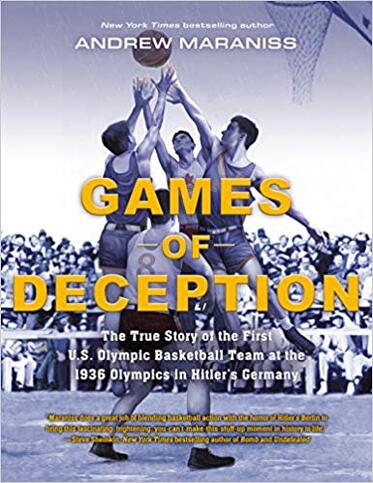 It's no secret Andrew Maraniss is one of my favorite sports authors, and one that I have a great respect for(not just because we both live and die by the Green Bay Packers). The New York Times bestselling author released his eagerly anticipated new book in November 2019 called Games of Deception: The True Story of the First U.S. Olympic Basketball Team at the 1936 Olympics in Hitler's Germany Since I've been on a small hiatus(has anyone even noticed?!), I'm going 'Beast Mode" and returning to the game in style by writing about a guy I consider one of the best at his craft. Games of Deception, while centered on the historic 1936 Olympic basketball team, is so much more than that. The book provides context into James Naismith and the genesis of basketball itself, background of the buildup going into these Hitler Olympics in both America and abroad, and the social, political, and competitive backdrop in Germany and America surrounding the 1936 Olympic Games. Games of Deception, much like the first Maraniss title Strong Inside, weaves sports, history, and culture together with seamless effort in his trademark descriptive journalistic style. It is the second book that Maraniss has done in a YA format, and one that I feel earns him a spot as one of the top voices in young adult nonfiction sports literature today, along with authors like Steve Sheinken, Phil Hoose, Howard Bryant. It's hard to underestimate the impact a book like Games of Deception can have on a generation of youth who have grown rather complacent to the catastrophic political events of the past, and rather apathetic to the current dangerous political climate. While some like to argue that sports and politics should hold their own courts, books like Games show that sports and society are indeed closely connected, and when used properly, sports can be a great tool to raise awareness to current social and political issues. In Games of Deception and Strong Inside, Maraniss has purposely chosen to take his message to a group most in need--our youth. And what better way than to speak to teens than through sports. I've worked with young adults as a teacher, librarian, and coach for the past 30 years; it takes a special type to pull this off. It takes a special kind of author to understand how to write for a teen. I can tell you for sure that Games of Deception is great book. But I'd rather talk use this space to highlight what Maraniss does in Games (and Strong Inside) that makes him a key voice for the younger generation .
So you need to get Games of Deception in your library now. Show it to your social studies and English teachers, it would be a great curriculum addition. Now more than ever, we need to have authors that focus on connecting with the younger generation and raising awareness to what's going on in the world today. These are scary and uncertain times in more than one way, Maraniss and his works have become the perfect model to cut through all the deception. 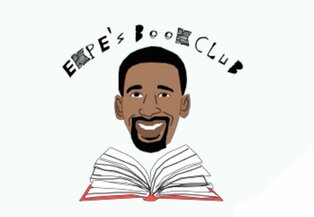
Recently, I caught an interview on a Milwaukee TV station with former Milwaukee Buck and current Utah Jazz player Ekpe Udoh. What grabbed my attention was not a focus on blocking shots, scoring, or Giannis, but it was on reading!
Aside from being a solid big man in the professional basketball ranks both here and overseas, Ekpe has admirably chosen to be more than just a basketball player. While some pros may talk a good game about reading, Ekpe is one of the few (along with Andrew Luck) who have chosen to become active in creating a true community of readers. He's on a mission to create a culture that doesn't simply read a book, but interacts with the text and reflects on how words can influence and impact society. Ekpe has even begun to include author interactions along with his books to create a truly powerful reading experience. Look, I've always thought Ekpe was a cool guy. He seemed to have a quiet and chill demeanor in his stint with the Bucks in 2014, and when I heard he began a book club, I was sold. In fact, I remember going to a game with my son (then 10) and pointing out Udoh saying, "That guy loves to read books!" (I'd bet an Ekpe's book club tshirt that I was the ONLY person in the arena who said that to anyone!!) When Udoh departed after the 2014 season for LA, I kind of lost track of him and the book club. But after some time in Europe, Udoh is in Utah with the Jazz, and back running a book club. Udoh may not be a household name, but I admire him as much as LeBron or Giannis for what he is attempting to accomplish in the realm of reading and social awareness.
In a nutshell, Ekpe chooses a book (in many cases he may tweet out a call for requests) and announces it on Twitter. People can then sign up, grab a book, and then let Ekpe lead the discussion via Twitter. He will announce the time, open up the discussion, throw out some questions, and weigh in personally. It's actually quite remarkable to see such honesty and willingness from a professional athlete. It is far above anything regarding book clubs that I have ever seen. The genuine nature of Ekpe makes him a perfect host for this event, and it has the feel of an intimate kitchen table discussion where real thoughts and reflections are examined. Often, after the book has been completed, Ekpe has been hosting fantastic discussions with the author for people to participate in. As for the heaviness of the topics, yes, the chosen books often pick at the sores of racism and other cultural/societal issues. But if the real wonder of literature is being able to expose problems, find common ground, and hash out solutions, then Ekpe's done everyone a real favor.
I hope all teen librarians and parents can link their kids with Ekpe's club. I'm going to do one of the next ones with my son. These are all books I have in my high school library--they have merit and value for any teen. The topics have some meat on the bone, and it's just nice to have someone in the position of a professional athlete stand up and lead the discussion. For years I have been trying to convice professional athletes that it would be wise for them to share their reading. Kids would really value what they have to offer on literature of past and present. How hard could it be for an athlete to tweet themselves with a picture of what they are reading? After all, as Ekpe says, "If I can play in the NBA and still find time to read — so can you!" 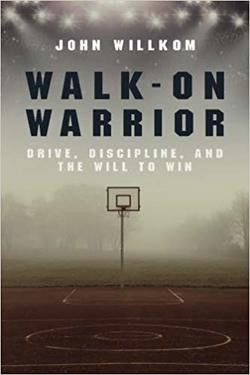 In basketball, it is often said that good players know how to "create their own shots." The great players create their own shot when the ball is in their hands as well as when the ball is across the floor. I bring this up because without a doubt, one of the takeaways of John Willkom's new book Walk-On Warrior is that in life, you are largely responsible for your own success. Willkom is a small town kid from Marshfield, Wisconsin who was gifted not with a strapping 6'-10" frame, but with a work ethic, brain, great family, and solid mentors. Using these gifts, he fashioned himself into a solid basketball player and better person who would eventually earn a spot as a walk-on at Marquette University. The book covers Willkom's entire life, from grade school to post college, focusing on how he moved up the ladder of basketball and career. I was a little leery at first that this book might be a little too cute of an "overcoming the odds" story, but it ended up being much more. From the start, Willkom established himself as a playmaker in life. His feat of starting a successful hoops camp as a high school kid and leading the charge on AAU opportunities for kids in the northern rural part of the state was amazing and showed drive well beyond his years. Willkom's ability to recognize important people in his life and how the people you surround yourself with have a hand in shaping you was thoughtful. The gifts of wisdom that coaches, counselors, and parents subtly offer through words and example are not lost on Willkom. Throughout the book we are introduced to these characters and are left with a clear vision of just how influential these folks were to Willkom. It's a great message for teens to find mentors in those around you. At every turn, Willkom has a knack for aggressively pursuing opportunities and contacts. Nothing is handed to him, which is another great lesson for kids. It's actually refreshing, in today's AAU "what can you do for me" culture, to see a guy who busted his ass at every turn, for every break, like it was a 50/50 ball on the court. Willkom makes it a point of the book to stress that lessons learned on the court are transferable to life. It's the mantra I harp on with all the sports books I look at on this blog. A sport does not exist is its own bubble, but rather creates a mind-set that is applicable to all phases of life. Don't worry, there's plenty of baketball in this book! There are some great Tom Crean strories, fantastic basketball moments from his career in high school and college, some classic Rick Majerus ineractions, and anecdotes surrounding players and coaches you may recognize (especially as a Wisconsin kid). Most of all, the basketball content really illustrates how grueling and physically demanding playing higher level hoops can be. It's a great gut check for any aspiring teen hardwood warrior to see what Willkom endured and did to stay relevant on the court. Overall, I liked Willkom's focus on life over basketball. His decision to walk away from Marquette basketball after a year caught me off guard, but it proved that his head was in the right place. For 99% of the kids out there, basketball will be nothing more than a game, and as much as Willkom loved the game, he knew that he needed that time to prepare for bigger challenges. It showed an immense amount of maturity to do this which I found admirable. I know I've been on a little bender these days with walk-on books. First, it was Mark Titus and his rollicking look at walk-on life for the Ohio State basketball team. Now, in finishing Willkom's book, I find a very different voice. Both can have a spot in a high school library, but Willkom's book would probably leave you in better graces with the Principal! In truth, while each story has its merits, I would give the Titus book to my son for entertainment, but I would give him Willkom's book for life lessons. And that's a pretty solid recommendation! 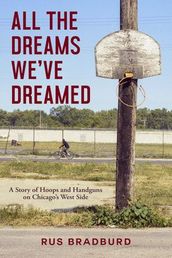 . For as long I've been librarian here, the book Hoop Dreams has been the gold standard when it comes to basketball books for high school kids. It's a relatable time period for teens--tracing the lives of these Chicago basketball prodogies from elementaty school through college signing, following the volitile arc of youth and dreams. What 8th grade kid who plays basketball doesn't have hoop dreams? Chicago city basketball powerhouse Marshall High School, one of the focal points of Arthur Agee's life in Hoop Dreams, is once again in the spotlight in Rus Bradburd's new book All the Dreams We've Dreamed. In the book, former Agee era player Shawn Harrington returns years later to Marshall High School as an assistant basketball coach. Tragedy strikes, however, when the beloved "Coach Shaky" Harrington is shot at in a mistaken-identity shooting. Using his body to shield his teenage daughter whom he's driving to school, Harrington is struck and paralyzed. While the life struggles of Harrington, both before and after that fateful event, are traced throughout the book, Bradburd's story fleshes out a much larger issue of gun violence, poverty, and lack of opportunity for these teenagers in Chicago's rough west side. It also spells out a somewhat unflattering look a the world of basketball recruiting--something we already kind of saw in Hoop Dreams. Over the course of the book, Bradburd traces the lives of a shocking number of Marshall players who were murdered, and the idea that basketball, once glorified as a "ticket out" for these kids, has now lost it's safety status. In a week when it has been reported that gun violence is at it's highest point in 40 years, Bradburd's book is an eerily timed exhibit on just how many lives one stray bullet can impact. Author Bradburd begins the book as a college basketball recruiter who convinces Harrington to come to New Mexico State, only to see them pull his scholarship after a year. After discovering that Harrington, now home in Chicago, was shot and paralyzed years later, Bradburd takes a keen interest, and one might say responsibility, for his status, and does what he can to be a positive influence on Harrington's life. It's pretty amazing how tirelessly Bradburd works to make Harrington's life better, and in the end, you're left witnessing a strong friendship that yields hope for a world that struggles so much with racism, health care, education, gun violence, and poverty. Bradburd is a very honest storyteller. He doesn't turn his book into a thesis on gun violence; his focus is square on the people and lives this violence impacts. He doesn't claim to be a savior, and claims as much responsibility as anyone for Harrington's situation. At times you wonder, "Why's this guy(Bradburd) doing all this stuff for him?" But it's the human condiditon; the desire to help and be part of the solution. Bradburd has a conscience. We all do. So do many of the many good people Bradburd introduces at Marshall that risk their lives to be part of the solution. The reality of how hard it is to make any progress is staggering. It's like putting out one bucket for a ceiling that's leaking in 100 different places. There is an absolute cloud of sadness that hangs over this book, as one chapter after another strings together hopeful ballplayers who get caught up in this cycle of poverty and fall victim to gun violence. As a reader, you don't know whether to be angry, sad, depressed, dismissive, or shocked. In the end, as I read this at a comfortable suburban coffe shop surrounded by holiday joy, I just felt stupid. So much we take for granted, so much we don't know, and so much we just choose to ignore. And our kids are no better. My freshman son and his hoops friends all sit around and watch YouTube highlight clips of these immensely talented kids, without ever understanding the context of what these kids face in life. It's such a crazy disconnect, and this book surely hammers that home. With that in mind, perhaps Bradburd's book should be required reading for high school athletes. A little glimpse into someone else's reality is always great medicine for a teenager. It's powerful to pull back the curtain on the TV version of competitive high school and college hoops to see the flaws in the system. This book is a must add for youth and adult libraries--urban, suburban, and rural. Our young athletes will be better people knowing that for some, just getting to a practice can be a life or death endeavor. 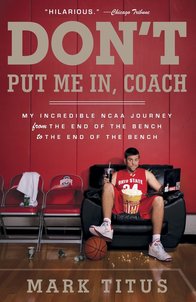 I was a member of Club Trillion long before Mark Titus took his first shot on a Little Tykes basketball hoop--but I'll get to Club Trillion later. My brother recently sent me an antique photo that forced me to dust off some memories. Jockbrarian, circa 1985, when I hated reading, Phil Collins was topping the charts with cheezy duets, The Breakfast Club was a new release, and I was the 15th man on a 15 member varsity high school basketball squad that won 5 games. My Junior year in high school I tried out with 60 other guys (back when "try-outs" actually existed and "entitlement" was in it's infancy). I moreless got asked to stick around. Three guys got the proposal of a lifetime: "We'd love to have you on the team, but you will absolutely never play." Only one sucker took the offer! Let's face it, I was honored and moved to be considered "just good enough." Like my mullet, this attitude would never fly today. If a coach said this to a kid's face now, they'd laugh and skip for Taco Bell. There's no glory in just being on a team, anymore. People used to play the game because they loved the game. You want to tell me another time in life when you can play basketball for 3 hours a day? People laughed at me, but I didn't give a crap. I embraced the joke. If that made me a fool, so be it. At least I was a happy idiot. At one point that year, I even had a fan newsletter circulating after each home game analyzing my warm up stats, layup style points, and shell-drill performance. I was a curiosity and a cult-scrub; it was brilliant. I bring all of this up because one of my favorite recently read books was Don't Put Me In Coach by Mark Titus. Titus played for Ohio State from 2006-2010, with the book being released in 2012. I say "play" loosely, as Titus was a bench warmer for the entire 4 years. Through his lack of playing, though, he created a blog called Club Trillion, which spoke not only to the sacred brotherhood of benchwarmers over the world, but also gave people an insider's view of a NCAA Div 1 college hoops program. Club Trillion was named to pay homage to the perfect game for a scrub: 0 stats in any game category. Through this blog, Titus became a crowd hero across the Big Ten for his reports from the pine. Like most self proclaimed basketball prodogies, Titus began his playing journey in AAU ball, where he had the fortune of being on a team with fellow future Buckeyes Greg Oden and Mike Conley. From there he rose to walk-on status through mostly good fortune. The majority of the book covers his 4 years at Ohio State playing for one of the best teams of the decade. His stories include many reference to to Oden, Conley, and especially The Villian. This is no Rudy story, though. There's no game winning basket and no miraculous rise from the floor after being knocked out. Thank God. There are enough Rudy stories on our shelves to disillusion kids into believing everything turns up roses and they are owed this trope. Titus is loved not for his accomplishments, but for his lack of accomplishments., which is why I connect with him. Titus writes with great candor. He comes off as funny, a complete smart-ass, and kind of a knob. But that's what makes his story great. Deep down, people struggle with the try-hard Rudys--hustling around around and brown nosing with such numbing sincerity. Titus is a hustler, but he's not going to be anyone's bitch. That's how true survival works as a benchwrmer on a real team. Some of my favorite parts are when he talks about his games against my Wisconsin Badger teams. Titus thinks our cheeleaders are ugly, and affectionately refers to our players as "the buzzcuts." Those Bo Ryan teams always looked like something out of Hoosiers, and by the time you were done laughing about how the hell any top 20 team could lose to a bunch of guys that looked like that, you'd already lost. For all his self deprication, the truth is that Titus clearly loves the game and he values the walk-on experience. His final game as a Buckeye is a pretty cool moment that showed exactly the passion behind the madness for Titus. For that, I often felt while reading the book that he would have been a great fit with the buzzcuts. Hell, he probably would have played! (And I've heard that in between taking charges, they actually joke around in Wisconsin) Titus often touts his high baskeball IQ, correctly infering that all of the "true learning" comes from time on the bench. Basketball knowledge? Not really....but you do learn pretty fast who sucks out on the court and how much better the game would be if you were playing. Don't let the fact that the book is 6 years old scare you. The only thing that has changed about bench warming is that it used to accurately be called "riding the pines" in that team benches used to be the actual first row of the wooden bleachers. Now, not only are bleachers plastic, but most teams are parked for games on candy-ass mega padded fluff chairs. A true luxury for the Titus generation of stiffs. Is this book fit for a high school library? Sure it is! It's crude and vulgar at times--many times-but if you would spend any time around a high school baskeball team, you'd hear far worse. I think there's a good message in all of this for young athletes anyways: Sometimes you have to chill out, laugh a little, not take sports so damn seriously, and enjoy the ride! It's a lesson I learned in 1985. 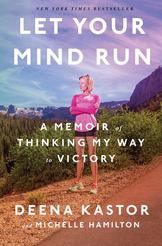 Sadly, my final year of assistant coaching the West Bend West girls cross country team has closed. In addition to running coach, pop psychologist, and relationship guru, I sported a new bit part this season as comedian-in-residence. My girls demand one stupid joke a day, and they also found out I write a sports book blog, thinking that was pretty damn solid comedy as well. Anyways, they begged me to include them in a blog post, and I will do one better--I will write one for them(A serious one!! Gasp!)--and of course recommend some books! Coaching high school girls has been an experience for sure. Moreso than guys, a coach of high school girls needs to provide a shoulder to cry on, a place to vent, infinite advice on the male psyche, and a really high tolerance for crappy music played loudly. There are moods galore; the highs after good races are boundless, and the lows after poor races are stiffling. Nobody gets down on themselves more than female runners. I can use a "get em next week" speech with any guy, but females usually burst into tears at the sound of a good pick-me-up. In a very serious way, their confidence is fragile to start, and can often spiral out of control until parents, friends, and coaches can no longer provide rationalization or support. For that reason, my parting advice and suggestions to you, my beloved runners, follows the sentiment in the book Let Your Mind Run by Deena Kastor. Since you probably weren't paying much attention to the running world until recently, Kastor's background is summarized as such: Deena Kastor was a star youth runner with tremendous promise, yet her career almost ended after college, when her competitive method—run as hard as possible, for fear of losing—fostered a frustration and negativity and brought her to the brink of burnout. On the verge of quitting, she took a chance and moved to the high altitudes of Alamosa, Colorado, where legendary coach Joe Vigil had started the first professional distance-running team. There she encountered the idea that would transform her running career: the notion that changing her thinking—shaping her mind to be more encouraging, kind, and resilient—could make her faster than she’d ever imagined possible. Building a mind so strong would take years of effort and discipline, but it would propel Kastor to the pinnacle of running—to American records in every distance from the 5K to the marathon—and to the accomplishment of earning America’s first Olympic medal in the marathon in twenty years. In translation, this book takes a peek inside the mind of an elite female runner. You may say, "I'm not elite, so this wouldn't work for me." Wrong. Elite or not, the mind works the same way. While the achievements of Kastor are worth reading about, the idea of cultivating a positive attitude and self confidence is the true nugget of wisdom here. In all my years and wisdom (and yes, I had teenage daughters who ran) I have found the mind of a female runner to be perfectionist, highly reflective, and intelligent. While these are great qualities, when channeled incorrectly, they can turn that same brilliant mind against itself into a monsterous self critic. I have dealt with many female runners who had trouble climbing out of pits of debilitating self doubt. When your belief in yourself has abandoned you, there is not much left to lean on. Such was the case this past year with a graduating runner(you probably know her). Luckily, Kastor's book had just dropped, and as a graduation gift, I wrapped up the book and wrote a little note hoping that there might be one thing gained from reading the book that would stem the tide of self doubt and alter her mind's course as she headed to college. A month later, I was met with a gratefulness that was genuine, and introspection that showed maturity. Clearly this girl had not just read the book, but was able to relay how it had literally changed her life. There were revelations that perhaps poor performaces were not due to physical shortcomings, but rather mental wavering. There was a sadness that mental bumps may have derailed seasons of promise--that full potential was being stiffled by a mind that wouldn't let the body believe that the next level could be attatined. Through Kastor's book, this runner was armed with a new confidence heading into her new college running experience. There was a greater awareness of the power of positive thought and the fact the building a sharp mind to promote self confidence was as important as building miles on the road. Another book in the same vein that just came out, but I have not seen yet, is Strong: A Runner's Guide to Boosting Confidence and Becoming the Best Version of You by 2 time Olympian runner Kara Goucher. This book looks to give the same type of confidence boosting advice to female runners. Those of you who aren't freshmen remeber the great article Coach J pulls out every year during the championship phase of the season about "Talking Back to the Voice." In it, runners are coached to not let voices of negativity into their heads. And when those defeatist thoughts do creep in, you need to "talk back" to that voice with affirmations and positivity that override the bad sentiments. By training your mind to say no, you are blocking those rogue emotions that say "You can't do that!" and talking back with "I CAN!" and "I WILL!" I would get you all copies of Kastor's book, but on a teachers salary, I'd be eating rice for the rest of the year. Do yourself a favor and read it. Mark it up; pull some inspiring quotes and stories out and set out to improve. Don't be so hard on yourself and believe in the best version of who you are--because it is a pretty great one. I should know--I've run alongside you for many miles. Best hopes, dreams, and wishes to all of you and thanks for the memories! Coach S In celebration of the magical run of 2018, any decent library in Wiscosnin should have these books readily available for public consumption between games! Any library that took down Brewer books and changed to Packer displays--you need to immediately reverse course. (A library that actually has a display of ANY sports books up should be immediately commended, however) #gocrewbooks
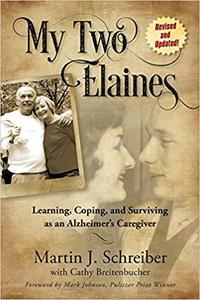 To a young athlete, sports experiences are often at the center of family bonding. Kids may cherish the fact that their grandparents attend their sporting events and are in the stands to cheer. They may also have fond memories of sitting around the TV on a Sunday afternoon watching a Packer game with their loved one, or attending a ball game and reminiscing about great teams of the past. But what happens when that loved one no longer can remember who is playing, or even that YOU are playing? Such is often the case when living with a loved one that has Alzheimer’s disease. Martin J. Schreiber, my uncle, wrote My Two Elaines which provides insight as to how family and friends of those with Alzheimer’s cope and adapt when their loved ones are afflicted with this disease. A recent athletic event made me think deeply about this book, how it deals with sports, and why it should be in a school library. This spring, the local high school hosted a major high school track meet. After a few events, on the award stand at the 50 yard line of the infield, was an athlete waiting to collect his award on the podium. Near the podium the meet manager stood waiting to hand out the award. In the stands there were hundreds of people, including the parents and grandparents of the athlete. On the track itself, competition continued. As the athlete was about the receive his award, his anxious grandfather began making his way to an opening in the fence at the 50 yard line. The gentleman wandered out onto the track as the 100 meter dash was set to begin. The meet manager, sensing disaster, waved off the race and made his way to the grandparent. At that very moment, everything could have become unglued. Instead, what transpired was something that will resonate for a long time. The meet manager, instead of becoming frustrated, gently went up to that man, “Sir, we are in the middle of a race.” “I am leaving and need to say goodbye to my grandson, Jim” he insisted. The athlete's father, trailing powerlessly behind, could do little to stop the grandfather from accomplishing what his mind was set to do. The father looked anxiously at the meet manager as he followed behind. “My dad has dementia”, he whispered apologetically. “He won’t leave until he talks to his grandson, Mike,” he pointed towards the podium. The athlete, who was witnessing his grandfather crossing the track, leapt off the podium and met his grandfather on the track. “I wanted to say goodbye, Jim,” the grandfather said The athlete put his hand on his grandfather’s shoulder. In front of the entire crowd, Mike hugged his grandfather. “I’m happy that you came to see me today,” he said, “and I'll see you soon.” With that, the meet manager and the father led the grandfather off the track, Mike returned to the podium, and the races resumed. I tell you this story because there were so many things that went right in a situation where everything could have gone wrong. The challenges Alzheimer’s presents can impact life events in unpredictable ways. But still, when reacting to the unexpected world of this disease.........
The impact of Alzheimer's extends far beyond the individual who suffers from the disease. In athletics, does this mean that a parent or grandparent should not attend an athletic event for a loved one? Should a young athlete be embarrassed by having his/her loved one with Alzheimer's show up to watch a competition? It can be very confusing to a youth who is used to seeing a loved one in a healthy state of mind, now function as a different person. How do they cope? I think that it is important that we have our young athletes understand that with some maturity and understanding, a recently diagnosed loved one can still be part of their lives. For this reason I wanted to recommend adding My Two Elaines to your library. Schreiber, whose wife suffers from Alzheimer’s, wrote the book from personal experience to help those who care for a person with Alzheimer’s. The book speaks to the reality of Alzheimer’s--not in scientific terms, but in terms of everyday life. Marty speaks to the reality that the person who suffers from Alzheimer’s is no longer the person they once were. Instead, there is a new reality--a new person so to speak, that requires a new understanding. There is, in a sense, a person before the disease, and the person after the disease. In addition to talking about the how the person with Alzheimer’s has changed, Marty focuses on how caregivers and family around that person can cope and exist with their loved one who is now functioning within the disease. What does this have to do with sports and kids? Everything. More and more middle school, high school, and college athletes are dealing with parents or grandparents suffering from Alzheimer’s. Many are confused on how to deal with the fact that someone like a parent or grandparent, who has been so supportive of their athletic careers in the past, now doesn’t function as they used to or remember what they used to. My Two Elaines will help these kids better understand the disease and give them strategies for keeping their loved ones in the game. It will help them realize that important relationships don’t have to end, but they will need to adapt and change. It’s not an easy topic for a young athlete, but an essential one to tackle. |
Archives
March 2023
Categories
Categories |




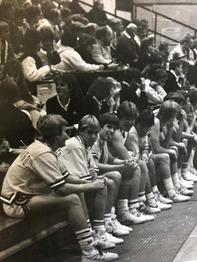
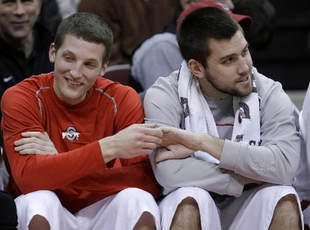

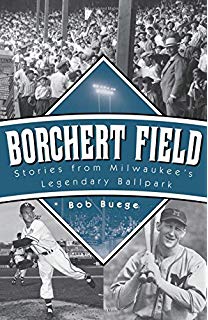
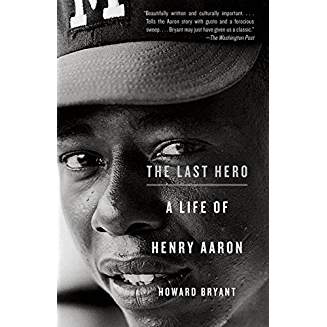
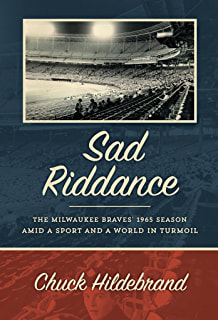

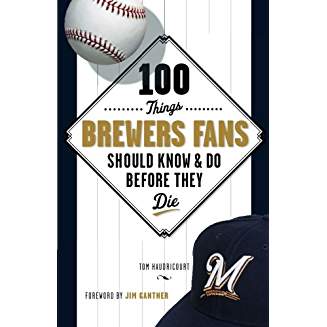
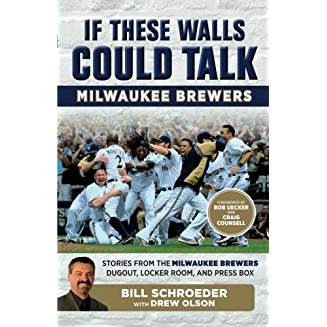
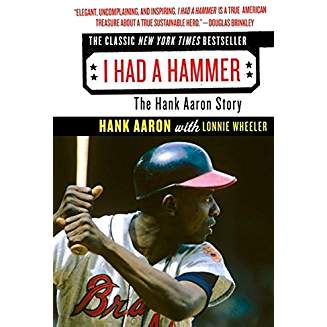
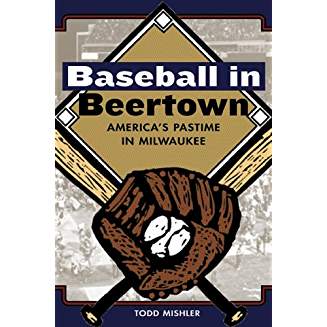
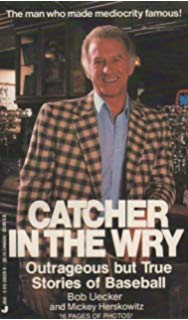
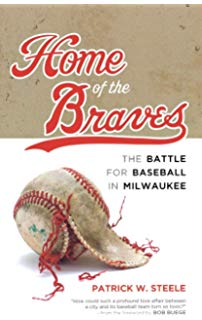
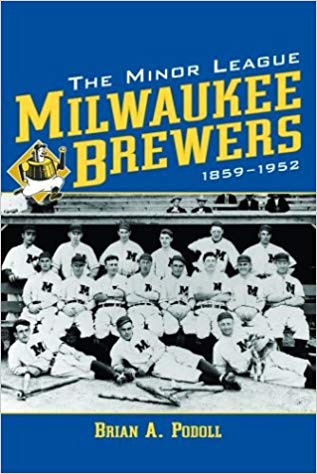
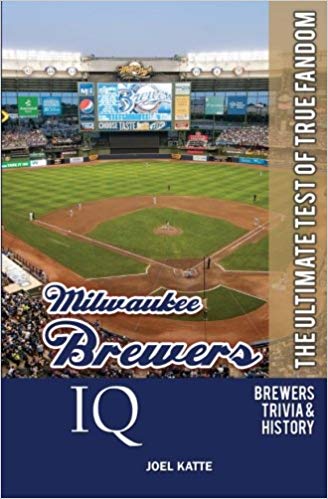

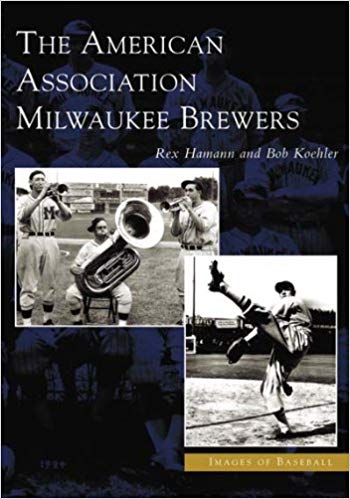

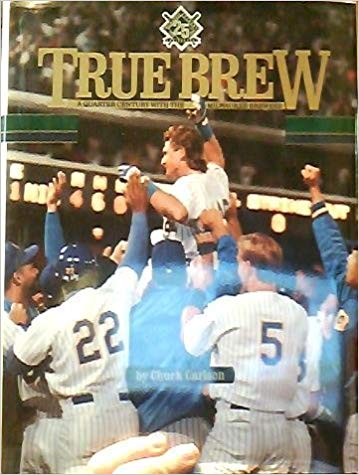
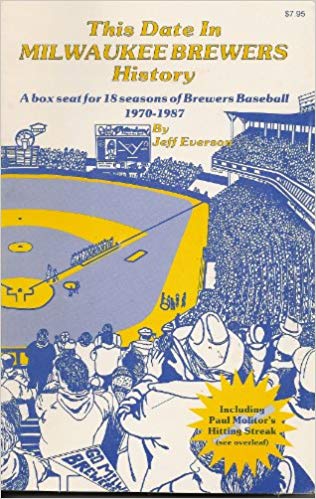
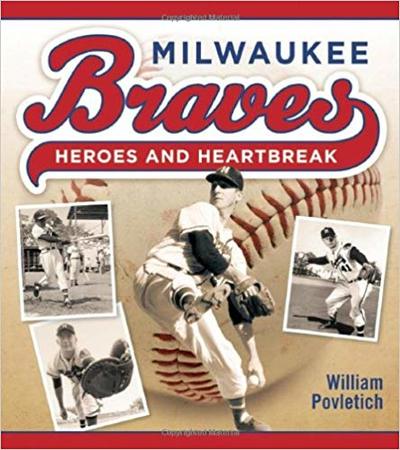
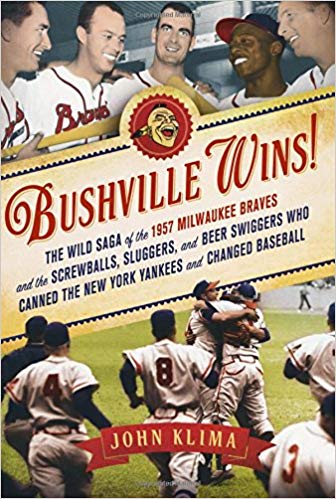


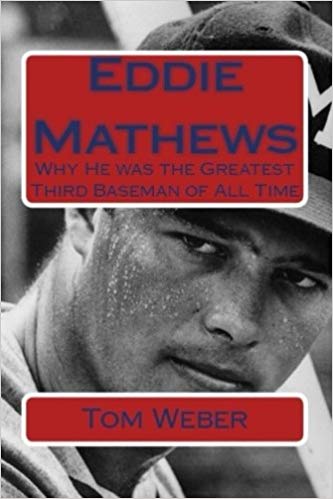
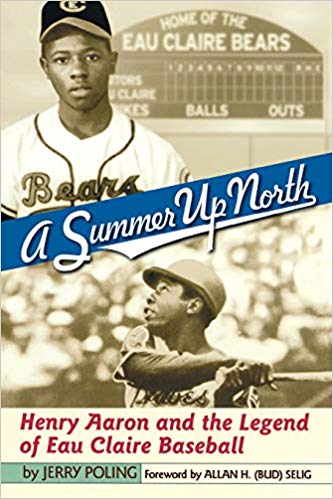

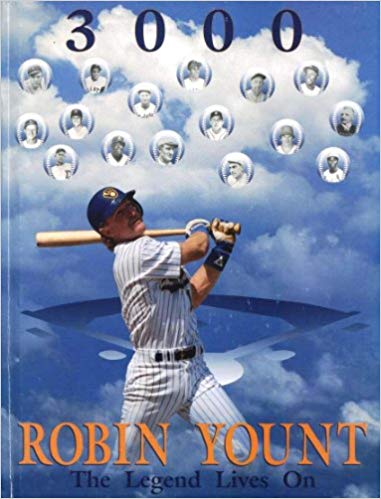
 RSS Feed
RSS Feed